A 21-year-old visual artist’s project on censorship draws inspiration from Khajuraho’s temple art which she pits against recent gags, to create a dialogue between past and present
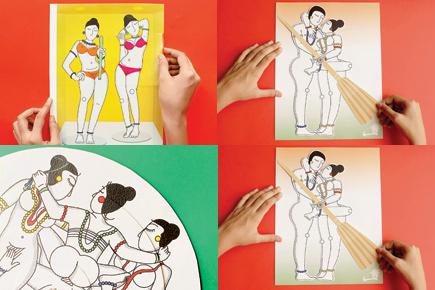
![]() Q. How did the idea for the project emerge?
Q. How did the idea for the project emerge?
A. I started the project in August 2015. I took a course, called Project Past in my seventh semester of college at Srishti Institute of Art, Design & Technology. It required students to pick a point of interest in history and work with it. I knew I wanted to make it contemporarily relevant and I had been thinking about moral policing and censorship for quite a while. Through a lot of research, conversations with peers and faculty, and brainstorming, I rested at picking Khajuraho temples as the historical context. I visited the complex on several occasions, and have always been familiar with its history. Even though it's famously known for its erotic sculptures, less than 15 per cent of the temple art is of this kind — the rest is celebrating life as a whole.
ADVERTISEMENT
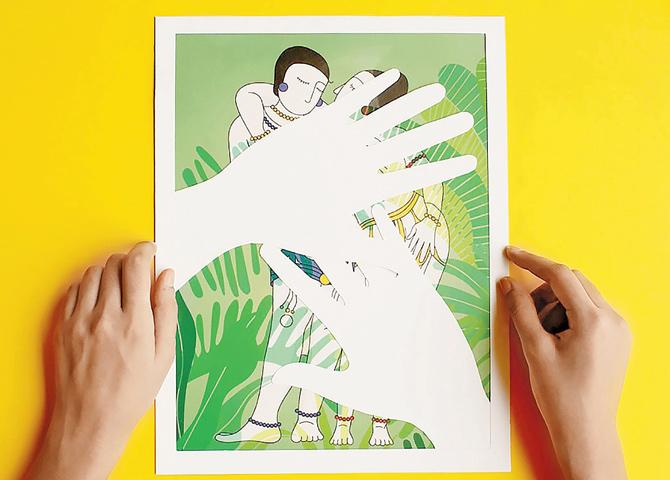
Beating and slapping of couples by a political party on Valentine’s Day
Q. Why the need to work on a project on censorship on the grounds of obscenity?
A. One particular event that set it off, was the incident from last year, when forty couples were driven out of private hotel rooms by the Mumbai police and booked for 'public indecency'.
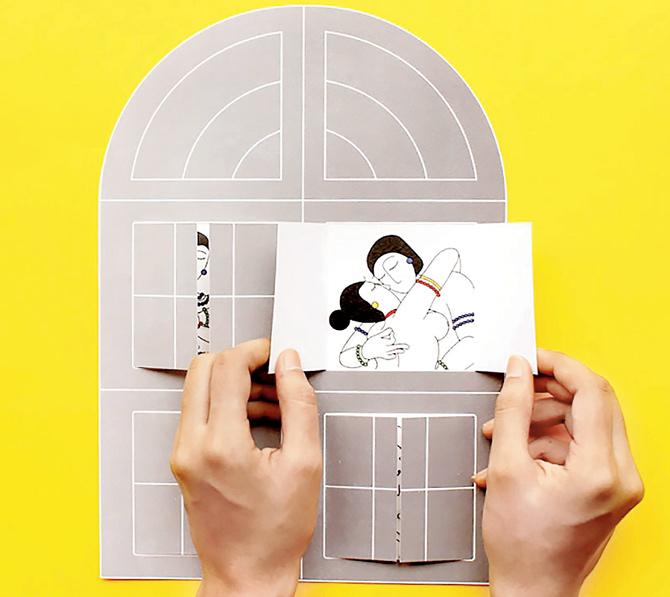
More than 40 couples were taken out of private hotel rooms, booked for public indecency and taken to the police station
Q. Talk us through the research demanded for the project.
A. It took me four months to complete the project, from research to the final outcome. My job was to first create a bank of data, from the past and the present that could be juxtaposed together. This was finally narrowed down to the Khajuraho temples and the eight incidents that I have cited in the project.
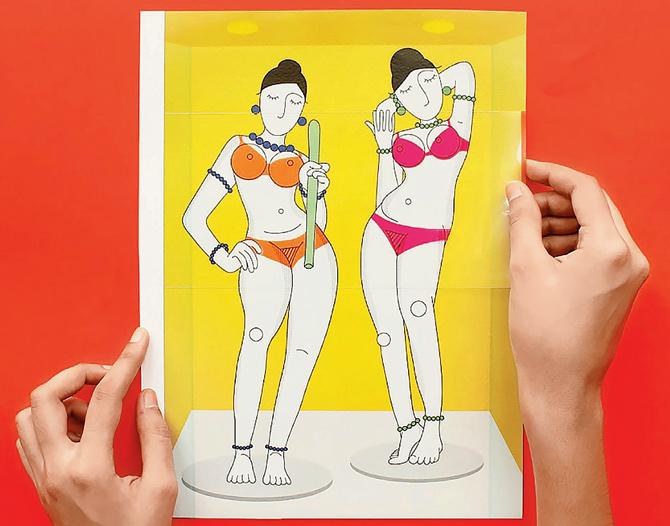
Lingerie-clad mannequins on display in Mumbai may be banned
Q. Which recent examples of censorship have you referred to?
A. Apart from the one I mentioned earlier, my works look at the ban on lingerie-clad mannequins in Mumbai, another illustration talks about how fully clothed cleavages were blurred out on the channel Romedy Now because they were too obscene for television. I have also commented on how homosexuality is seen as a disease that can apparently be cured by a yoga guru, and on how sex education will pollute young minds, and hence must not find space in the improved and 'Indianised' education system that the government wants to introduce and the beating, slapping and bashing of the couples by a political party on Valentine's Day 0. Also after the launch of Swachh Bharat Abhiyan, Union Ministers of Culture and Human Resource Development respectively, had pledged to launch a countrywide movement to rid the nation of sanskritik pradushan (cultural pollution). Mahesh Sharma, Union Minister (Culture and Tourism) said, “We will cleanse every area of public discourse that has been Westernised and where Indian culture and civilisation needs to be restored — be it history we read or our cultural heritage or our institutes that have been polluted over the years. Cleansing exercise will involve school curricula, art and cinema, science and technology and libraries”. My work comments on all these events.
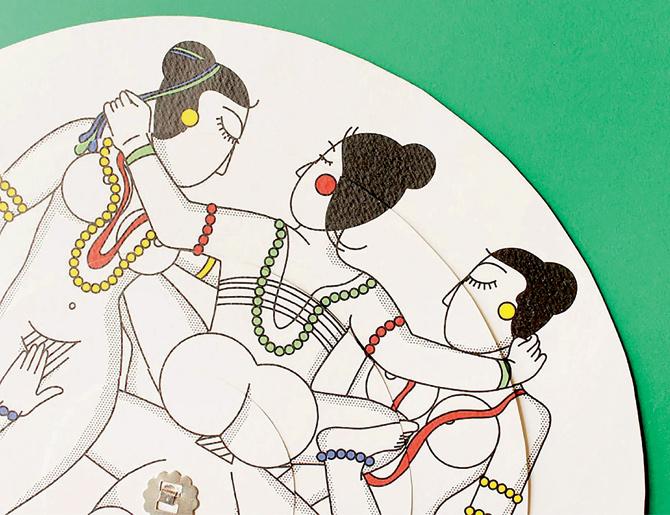
Enacted in 1860, Section 377 of the IPC criminalises ‘carnal intercourse against the order of nature.’ Punishment may extend to life imprisonment. “I invite the gay community to my yoga ashram and I guarantee to cure them of homosexuality.”
— Baba Ramdev
Q. What challenges did you face while working on such subjects?
A. Initially, when I began researching, I often found myself getting lost in the politics of the subject. There are also many cultural, social and religious aspects that are attached to it. I often felt as if I was inept to successfully deal with such a complex issue on my own. The biggest challenge was to make sense of all the material that I had sourced. The bank of resources was huge and I had to narrow it down to make it more concise. From a huge list of contemporary incidents, I narrowed it down to eight, and from a bank of examples from our cultural past, I narrowed it down to the Khajuraho temples.
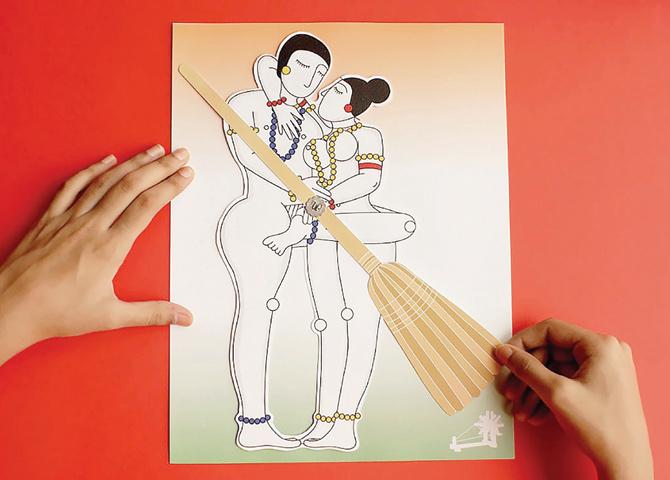
After the launch of Swachh Bharat Abhiyan, Union Ministries of Culture and Human Resource Development pledged to launch a countrywide movement to rid the nation of sanskritik pradushan (cultural pollution)
Q. What has the response been?
A. So far, I've received a very positive response. I was really to see the project do so well, once I put it up online. Personally, I have not yet received any hate mails, and hope I don't either! Shashi Tharoor tweeted sharing my work on Facebook saying, “A young Indian's very interesting art project on censorship &obscenity, based on Khajuraho) (sic). This was inspiring because I had read a lot of his interviews where he talks about censorship, as part of my research.

Akshata Chandra; Visual Artist
Q. What's next?
A. I finished working on a project that is quite similar to 'Being Censitive', in the way it was put together conceptually. It explores critiquing the morals and notions told to us as children, drawing parallels from the four Grimms' fairytales of Cinderella, Rapunzel, Snow White and Little Red Cap. Titled 'Grimm Reality', it comments on how these good-natured cautionary advices have become toxic restrictive moral rules that girls must abide by so as to not 'invite' any kind of trouble.
The project looks into the fallacies of these moralistic parameters that have been set for girls to stay safe. The aim of the interpretation is to map out similarities found in the 'moral of the story' extracted from the four tales and see how they play out in the contemporary Indian context. By using Western text to draw parallels in an Indian context and see how relevance can be mapped out, sheds light on how patriarchy is a global issue and has been since long.
 Subscribe today by clicking the link and stay updated with the latest news!" Click here!
Subscribe today by clicking the link and stay updated with the latest news!" Click here!






